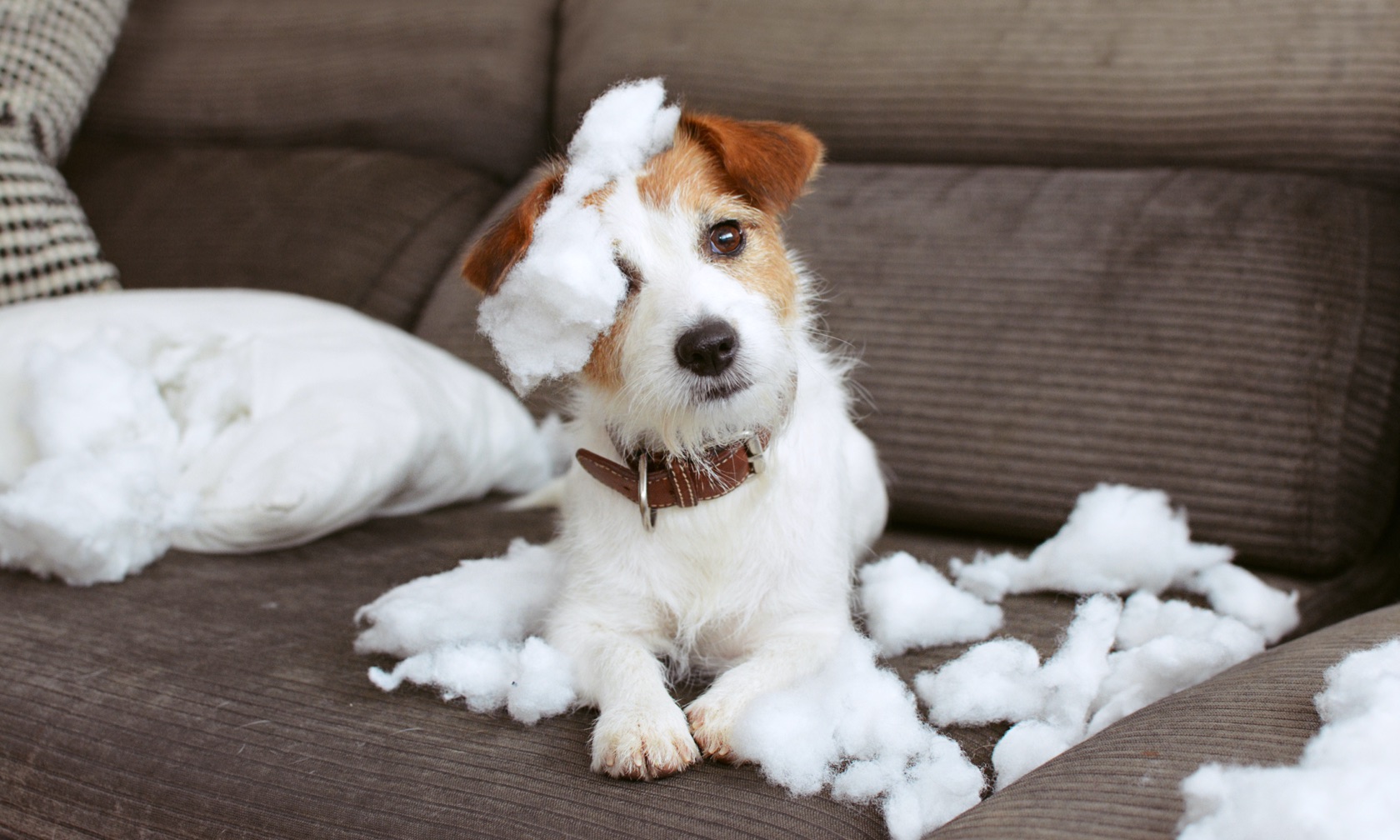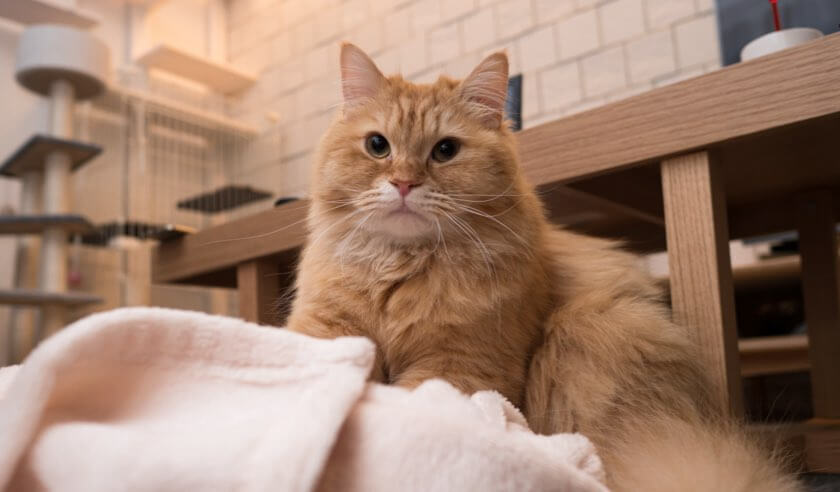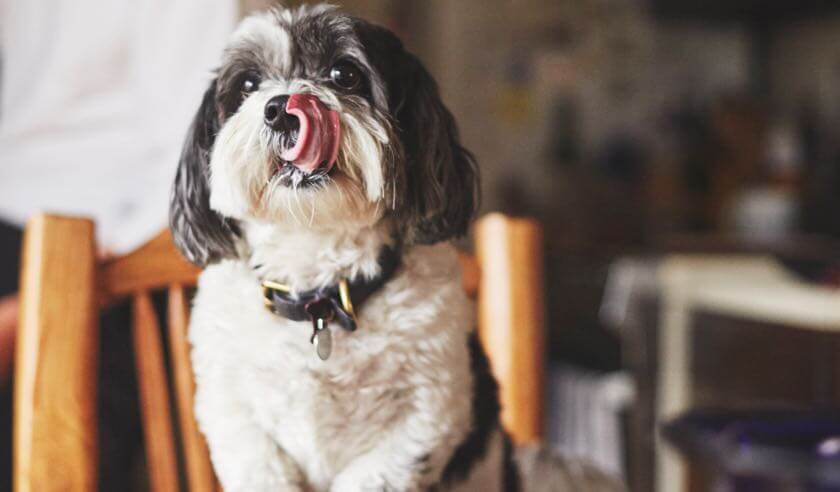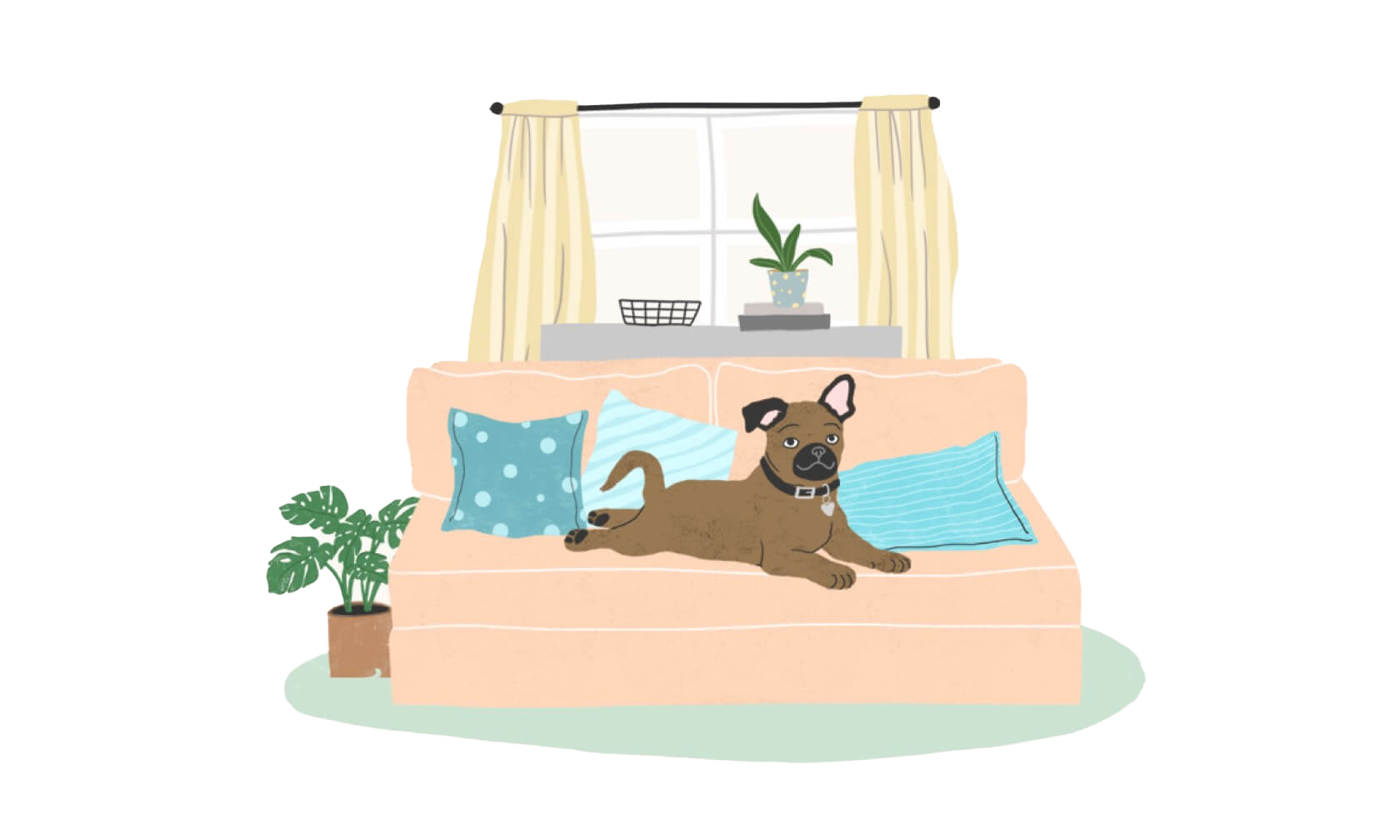Preparing for a new puppy or dog in your life includes a top-to-bottom look at what will be their new home. Beyond stocking up on the essentials for dogs like a leash, dog treats, and toys, there may be things that shouldn’t be within reach of your new dog throughout your house. Before you bring a puppy or new dog home, make sure they’ll be safe and secure by dog-proofing your house first.
It can seem daunting to dog-proof your home, as each room has different dangers to your dog. But by taking it one room at a time, you can ensure that your home is dog-proof!
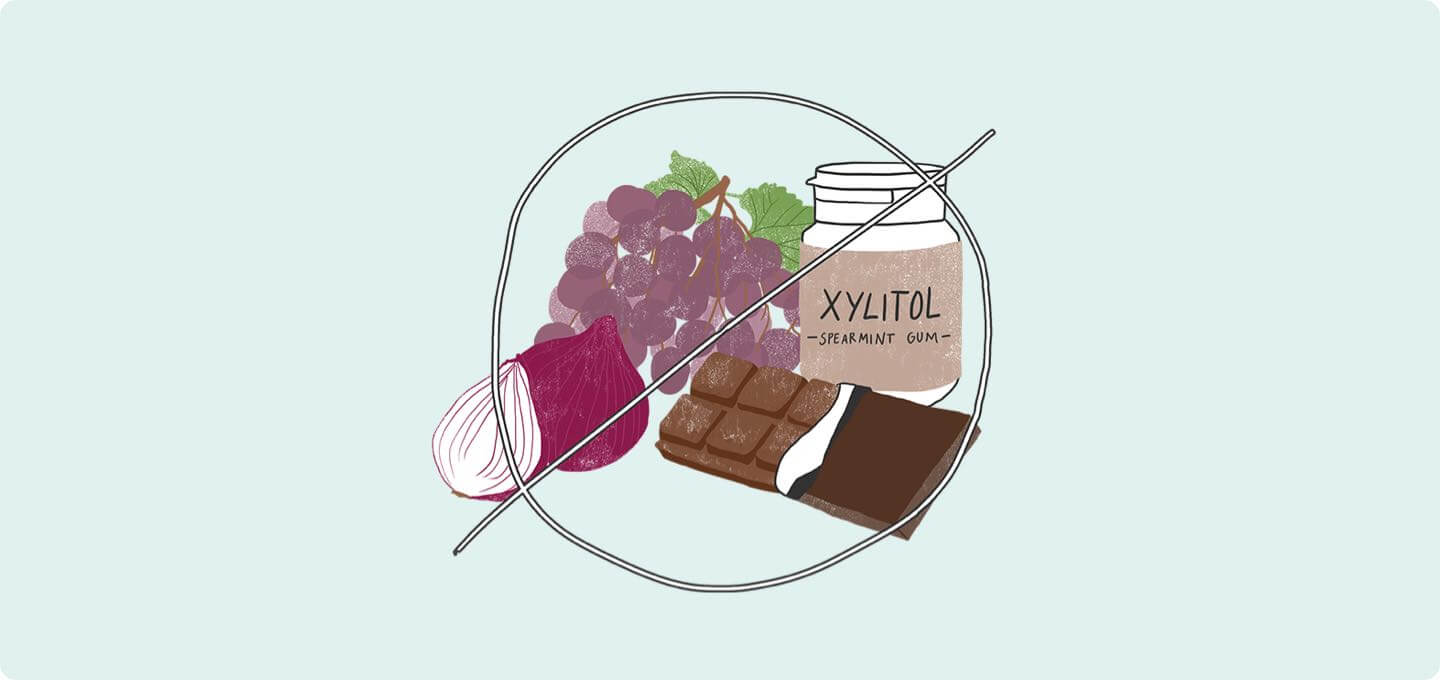
Kitchen
The kitchen contains a variety of substances, foods, and different kinds of tools that can be hazardous to a dog or puppy's well-being. Consider a dog's strong sense of smell and how driven your pup is to investigate every nook and cranny of this room.
Clean off Counters
Keep your counters clear of food and clean the area after any food preparation. Dogs will follow their nose for any possible snacks and will surf the counters for crumbs. Be sure to keep medications and supplements — yours or theirs — off counters, too.
Secure Food
Store food in closed cupboards, drawers or the pantry to prevent your dog from ingesting potentially toxic foods. Xylitol, chocolate, grapes, onions, and other people foods are toxic for dogs and can be life-threatening.
Cut up Any Chip or Food Bags
Cut the bag on both sides so it folds out flat and doesn’t become a suffocation hazard. Pet suffocation happens far too often and is preventable. Store any food bags up high in cupboards, or simply transfer any bagged food to other containers. Don’t leave your dog’s bulk bag of kibble or treats laying around where they can get their paws on them (or head into them, more importantly). Serve your snacks like chips or popcorn in bowls rather than from the bag.
Keep Your Kitchen Cleaning Products and Dish Detergents Out of Your Dog's Reach
A child-proof cap doesn’t stand up to a dog’s chewing, so keep these things stored out of their reach.
Living Room and Bedroom
While a bedroom doesn't have the same food-driven appeal as a kitchen, we often have various objects in our bedrooms that are hazardous for dogs and puppies to chew on or ingest.Cover up Any Electrical or Cable Cords
Puppies love to chew, and even adult dogs might find these irresistible. Bundle these cords and cables together and cover them so they can’t be chewed. Put away your phone or laptop chargers when not in use. All of these can cause electric shock with resulting burns and even breathing difficulties should your pups chew on them.
Remove Toxic Plants
Many common houseplants are poisonous to dogs, such as Sago Palms, Cyclamen, and Autumn Crocus1. The ASPCA also has an extensive list of poisonous plants.
Keep Candles and Essential Oil Diffusers up High and Out of Reach
You don’t want your dog knocking over a lit candle and starting a fire, or ingesting scented oils. If using essential oils, make sure the scent isn’t harmful or irritating to your dog.
Hang Your Coats and Bags or Put Them Away
Dogs will snuffle through any bags or coat pockets and might ingest toxic items like nicotine products, medication, or xylitol in sugar-free gum.
Laundry Room and Garage
These rooms both contain various liquids, detergents, cleaning solutions, and other items that are hazardous to pets. While these substances aren't appealing to us, dogs and puppies are curious creatures and it's better to be safe than sorry.
Store Products Out of Reach
Safely store cleaning products, laundry detergents, or dryer sheets on a high shelf to keep them out of reach of your dog.
Keep Toxic Products Hidden
Anti-freeze, rodent poison, slug baits, polyurethane glues, and de-icers are extremely dangerous for all pets. Look for “pet-safer” products when possible.
Keep Dirty Clothes Out of Reach
Dogs love to go laundry diving and proudly carry around your unmentionables at the most inopportune times! But socks, underwear, washcloths, and other small items in the laundry pile can cause intestinal blockage and other health issues if eaten. Take care to keep laundry secured in a basket with a lid to keep curious noses out.
Bathroom
Like the laundry room, bathrooms often have different kinds of cleaners and soaps that we don't want our pets getting into. Families often keep medicines stored in the bathroom, which can also be toxic to dogs and puppies.
Use Your Medicine Cabinet
Human medications can be fatal for dogs. Keep medicine bottles properly closed and store them in the cabinet.
Take Your Medication Over the Sink
If you happen to drop a pill, a dog can move fast and eat it thinking it’s a treat. By taking any medicine over the sink, you prevent it from falling onto the floor in the event it slips from your hand.
Keep Trash Covered
Many dogs find bathroom trash cans incredibly enticing. Use a lidded can or keep the trash can in a cabinet.
Close the Bathroom Door
By keeping the bathroom doors closed, you’re preventing your dog from playing with the toilet paper roll or pulling out every tissue from the box.
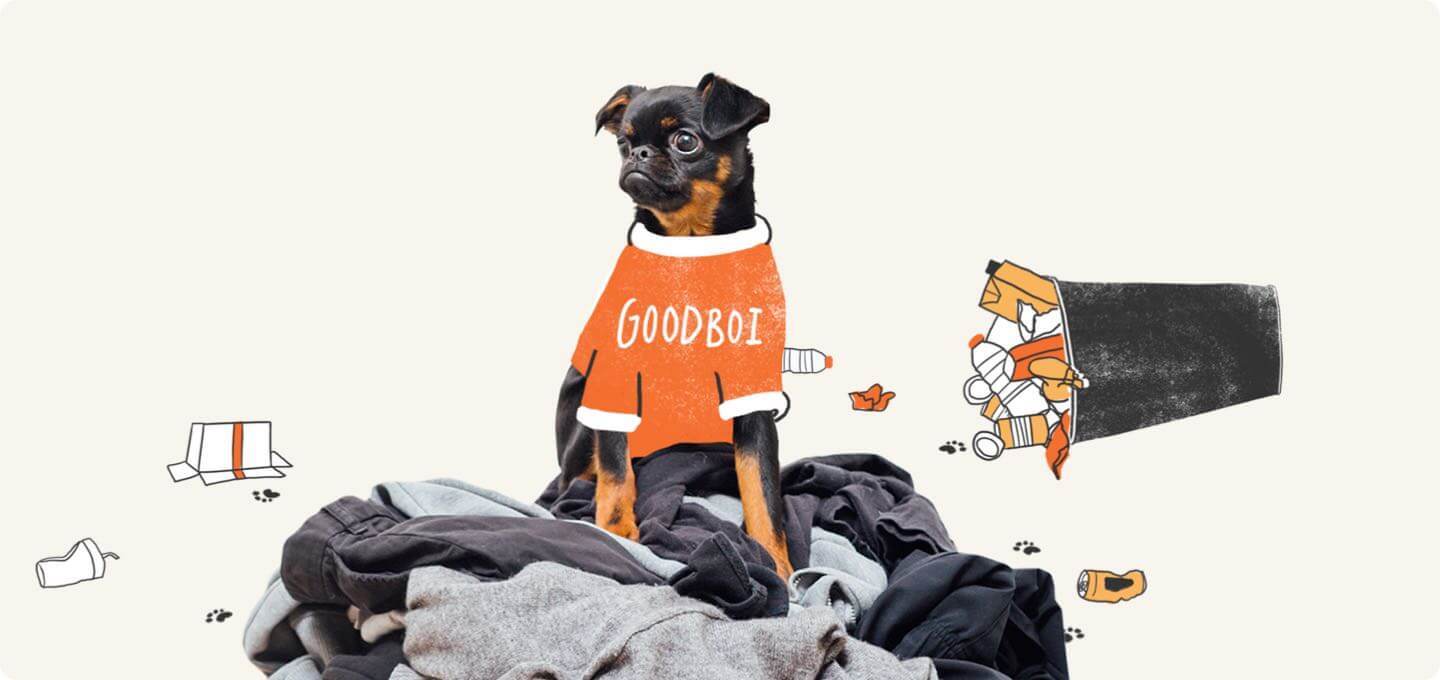
Puppy-Proofing Tips
New puppies are curious, mischievous, and love to explore with their mouths, so extra steps should be taken when puppy-proofing, to make sure they stay safe.
- Use gates to block off certain off-limit rooms or areas. New puppies are curious and usually not quite housetrained. Use pet gates to keep them in dog-proofed and safe areas, or keep doors closed to rooms where they shouldn’t wander unsupervised.
- Supervision required! Your puppy should always be under your watchful eye, not only for safety but also to help with house training. When not under your direct supervision, keep them in their crate or puppy pen.
- Provide your puppy with a safe way to get on or off the couch or other resting areas if you plan on allowing them up on furniture. Young puppy bones are still developing, and a big leap or fall from even a small height can result in injury or broken bones.
- Begin training early. Teaching your puppy basic skills can help keep them safe. Focus on teaching them Leave It and Drop It, and consider teaching them boundaries within your home to encourage them to stay out of dangerous areas.
ZPC-00591R2
- Poisonous Plants. Toxic and Non-Toxic Plants List. ASPCA. https://www.aspca.org/pet-care/animal-poison-control/toxic-and-non-toxic-plants. Accessed March 15, 2020.
